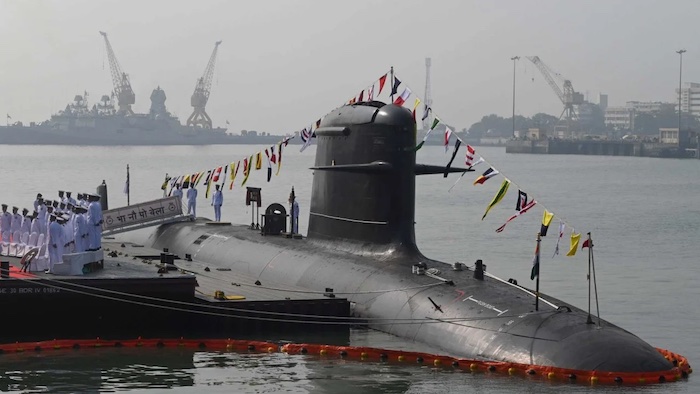
The Pakistan Navy is set to commission its first Chinese-designed Hangor-class submarine next year, in a move that underscores deepening military cooperation between Islamabad and Beijing and marks a significant step in countering India’s regional influence.
Speaking to China’s Global Times, Admiral Naveed Ashraf, Pakistan’s naval chief, said the submarine programme—part of an eight-vessel deal with China—was “progressing smoothly” and would greatly enhance Pakistan’s ability to patrol the North Arabian Sea and Indian Ocean.
The agreement, reportedly worth up to $5 billion, will see the first four diesel-electric attack submarines built in China, while the remaining four will be assembled in Pakistan, a move aimed at boosting local shipbuilding and technical expertise.
Pakistan has already launched three of the submarines into China’s Yangtze River from a shipyard in Hubei province.
“Chinese-origin platforms and equipment have been reliable, technologically advanced, and well-suited to Pakistan Navy’s operational requirements,” Ashraf said, adding that the Navy is also focusing on emerging technologies such as artificial intelligence, unmanned systems, and electronic warfare, with China as a key partner in development.
The submarine project forms part of a broader military and economic partnership between the two nations. According to the Stockholm International Peace Research Institute (SIPRI), Pakistan accounted for over 60% of China’s arms exports between 2020 and 2024.
The collaboration extends beyond defence into infrastructure and trade through the China-Pakistan Economic Corridor (CPEC) — a 3,000-kilometre project connecting China’s Xinjiang region to the Gwadar deep-water port on the Arabian Sea.
As a crucial component of China’s Belt and Road Initiative, CPEC provides Beijing with a direct route for importing energy from the Middle East while bypassing the Straits of Malacca, a strategic chokepoint vulnerable to disruption in wartime.
The update on Pakistan’s submarine programme comes amid heightened tensions between Islamabad and New Delhi, following a May confrontation in which Pakistan’s air force reportedly used Chinese-made J-10 fighter jets to shoot down an Indian Rafale aircraft built in France.
The incident reignited debate over the reliability and sophistication of Western versus Chinese military hardware, and signalled Beijing’s growing influence in South Asia’s defence dynamics.
Analysts say Pakistan’s new submarine fleet will not only strengthen its maritime deterrence but also bolster China’s strategic reach across the Indian Ocean, stretching its influence toward the Middle East and Central Asia.
Melissa Enoch



